2020 Subaru Legacy Review & Buying Guide | It’s a sedan! And a good one
https://ift.tt/2opZEsT
The 2020 Subaru Legacy is facing a very steep climb. Though redesigned and massively improved, it’s still a sedan in an increasingly SUV world – and a sedan, no less, that has always struggled to attract shoppers away from the Honda Accord and Toyota Camry. Even within Subaru’s own dealerships, it seems destined to gather dust while buyers gobble up the brand’s four popular crossovers.
But, who cares about popularity? The new Legacy is extremely good, benefiting from technological advancements and massive engineering upgrades for 2020 – including the welcome return of a turbocharged engine. It’s better to drive, more comfortable, and easier to use, while maintaining its sterling safety reputation and standard all-wheel-drive system. Really, the Legacy has never been so appealing and competitive in the midsize sedan segment, even if its timing is a bit lousy. If you’re among those happy to avoid the SUV trend, it is absolutely worth going against the grain.
What’s new for 2020?
The Legacy is completely redesigned for 2020 – although it’s a bit tough to tell by the styling. It adopts the same platform as other recently redesigned Subarus, most notably, the 2020 Outback that continues to be effectively a lifted Legacy wagon. Or, given their respective popularity, is the Legacy now a lowered Outback sedan? In any event, the two share virtually everything except their ride heights and trunk designs. That includes a substantially stiffer structure that contributes to improved handling, steering precision, ride comfort and safety; a mostly new base engine and the welcome return of a turbocharged four-cylinder as the engine upgrade; new accident avoidance tech; and an improved interior with nicer materials, a more attractive design and a massive 11.6-inch vertically oriented touchscreen in most trim levels.
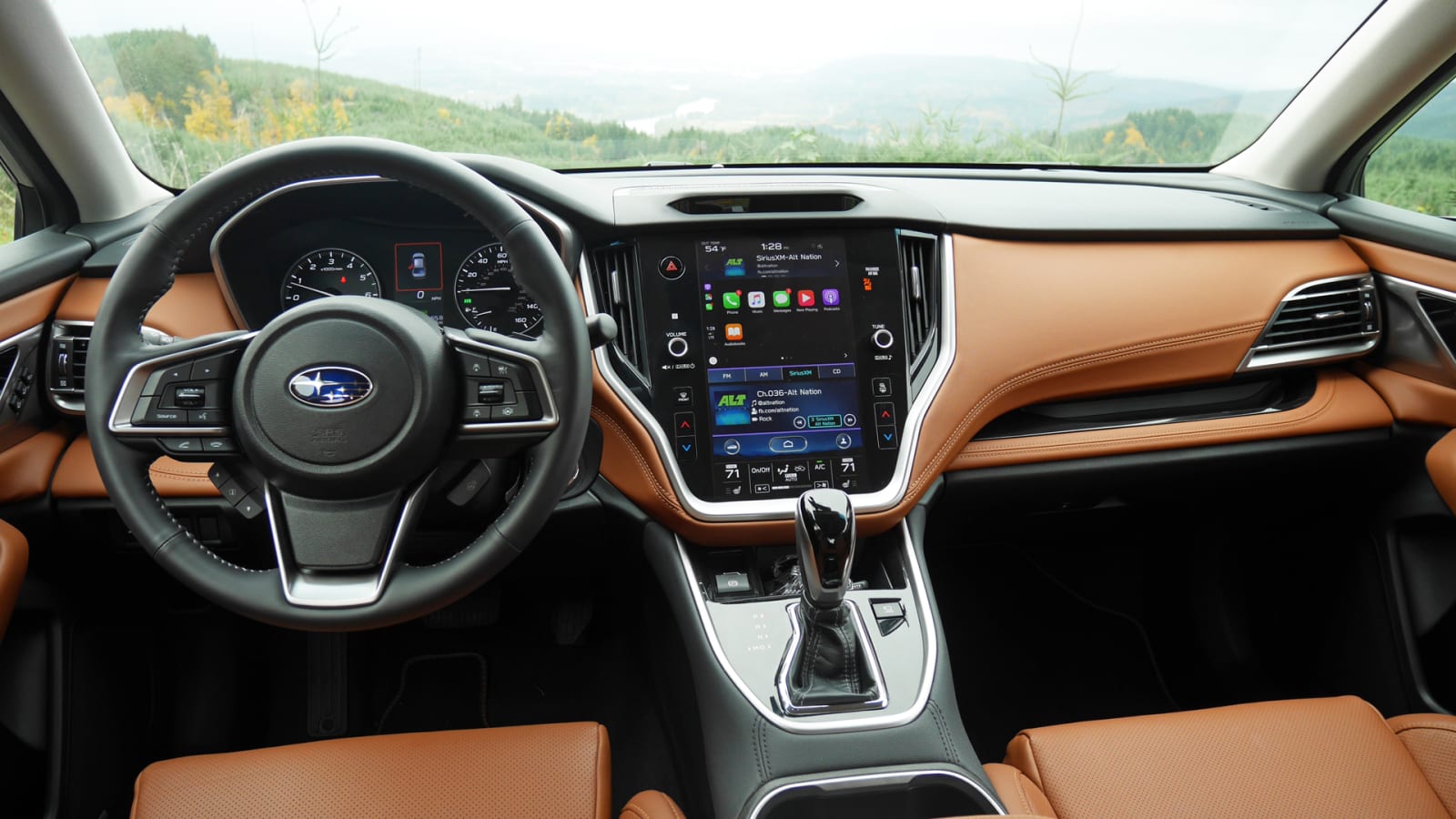
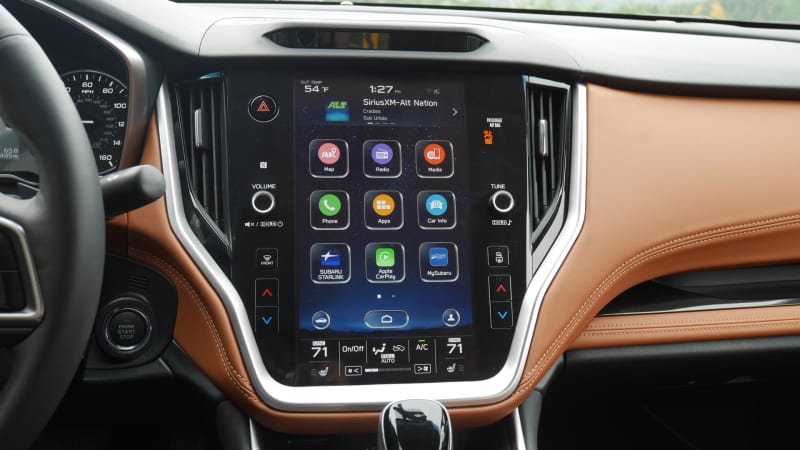
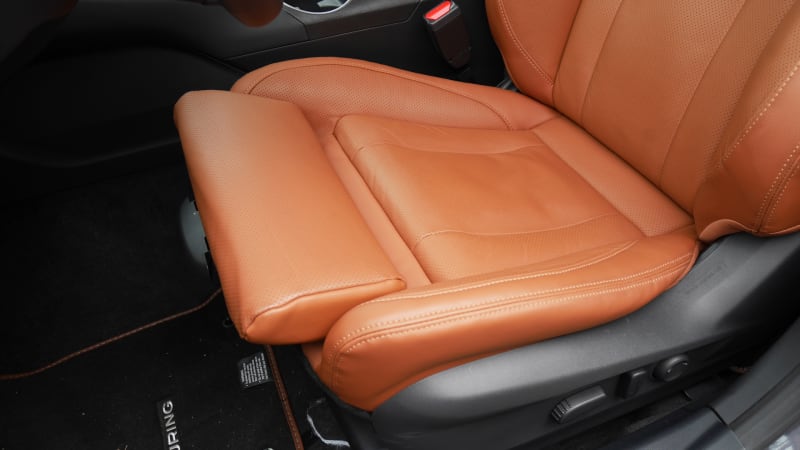
What’s the interior and in-car technology like?
Like the exterior, the Legacy’s interior isn’t as eye-pleasing as those of many rivals, but it’s also better than before. It boasts better materials, including padded and stitched simulated leather on most surfaces up front that contributes to a far more upmarket look and feel. The top-of-the-line Touring XT trim level, pictured here, gets pretty swanky with its Tan Nappa Leather, and we like that Subaru didn’t feel the need to spread fake wood trim about to make it seem more luxurious.
The cabin’s show stopper, however, is the 11.6-inch vertically oriented touchscreen found in all but the base trim level (and even that has a pair of 7-inch touchscreens that handle the infotainment and climate systems). It’s more functional than similarly sized and shaped screens in the Toyota Prius and Ford Explorer, specifically in terms of how it utilizes its extra-tall dimensions. Compared to other touchscreens, the ability to show the Apple CarPlay/Android Auto interface at the same time as the audio system is an excellent feature, preventing the annoying back and forth between Apple/Android and Subaru’s user interfaces.
It’s not perfect, however. Although there are physical buttons for the dual-zone temperature adjustment and defrosters, all other climate controls are in the screen. For this, the system is slow to react and usually requires bringing up a sub-menu. This includes the heated and ventilated seats, which seemingly take forever to engage. And it’s a very minor complaint, but the touchscreen’s purple color scheme is at odds with the rest of the cabin’s lighting and looks a bit cheap.
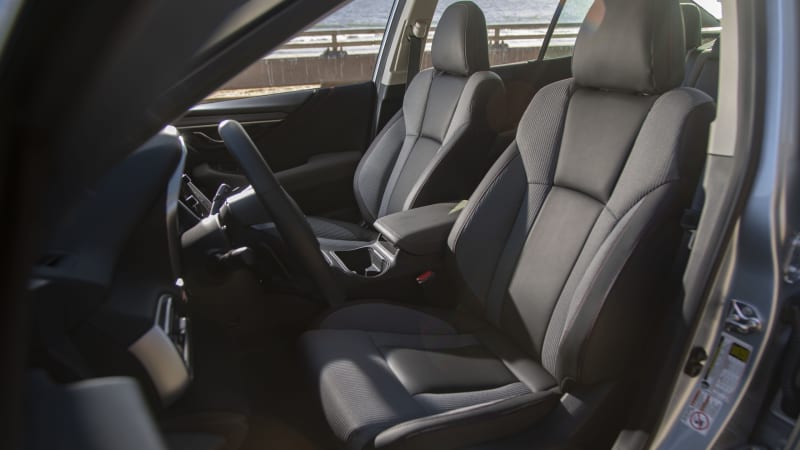
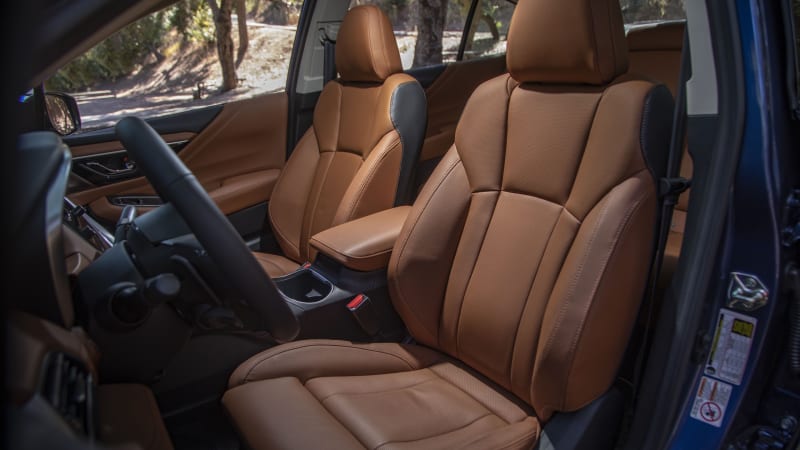
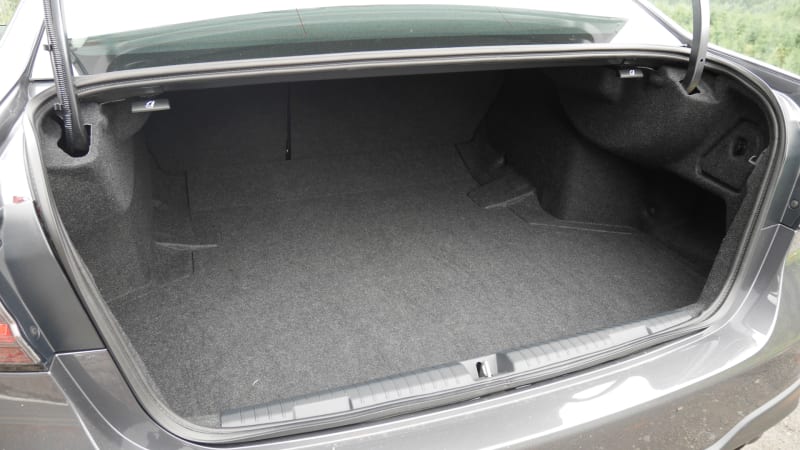
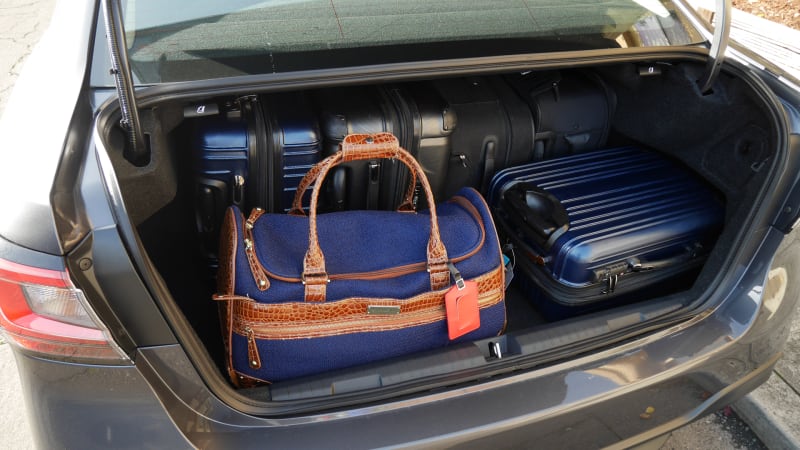
How big is it?
So you think you need an SUV to carry all your stuff, eh? Well, we managed to stuff in five suitcases and four duffle bags in the trunk with some room to spare. That’s better than many similarly priced compact SUVs. It’s also better than the Toyota Camry and far better than the Mazda6, while falling a bit short of the black hole that is the Honda Accord‘s trunk. Of course, if you do need more space, the mechanically related Outback expands upon the Legacy both in terms of its wagon cargo area as well as its unique roof-rail system (the Legacy at least comes standard with integrated rack mounting points).
The Legacy also provides the same 39.5 inches of rear legroom as the Outback, which amounts to a vast amount of space even behind tall drivers. Again, only the Accord can best it. Besides keeping your rear passengers’ knees free of seat grazing, having so much space also makes it easier to fit a rear-facing child seat.
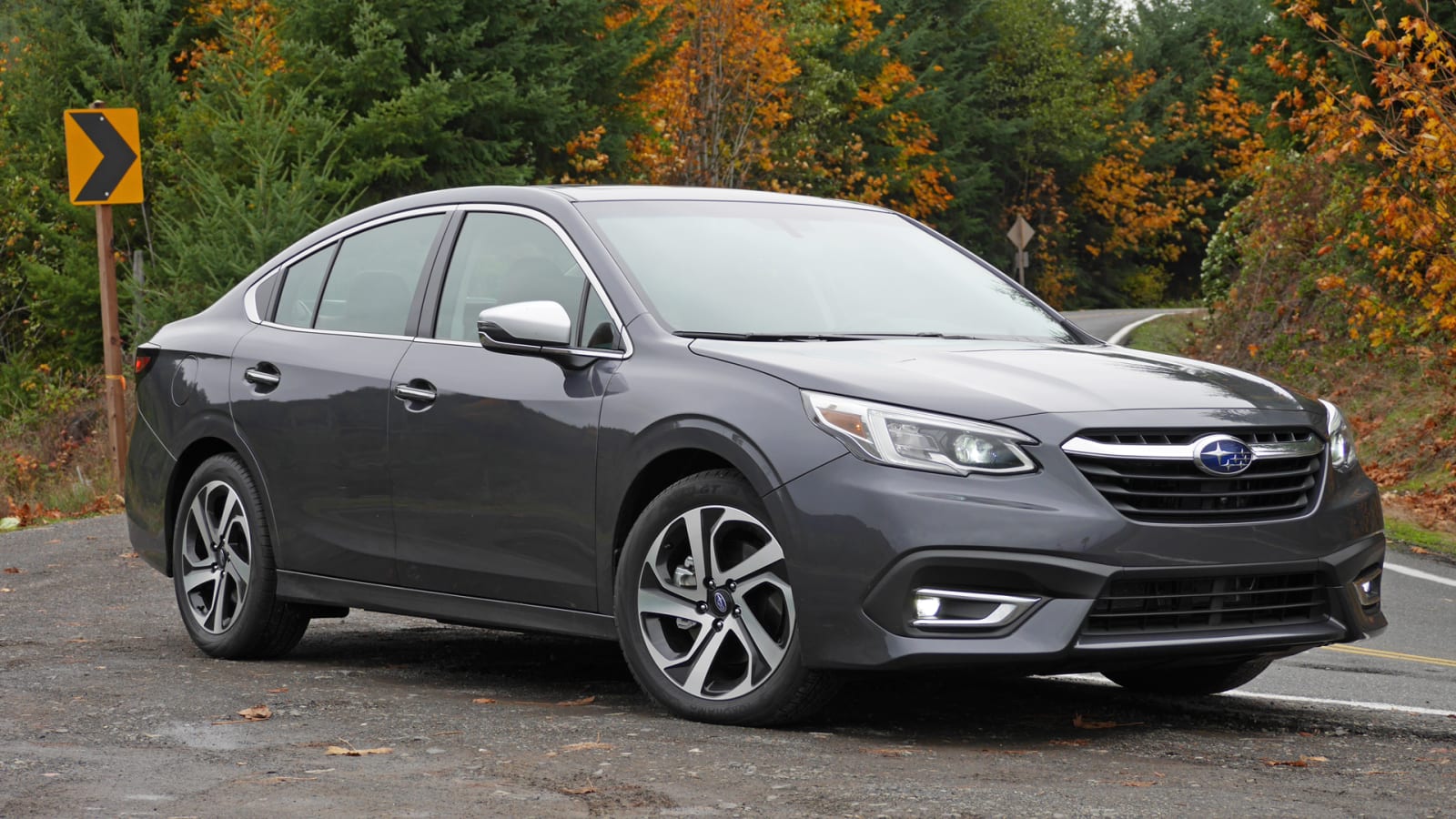
What’s the performance and fuel economy?
Every 2020 Legacy comes standard with a CVT and all-wheel drive. It’s rare for the latter to be available yet alone standard in this segment.
Most trim levels come standard with a 2.5-liter flat-four that produces 182 horsepower and 176 pound-feet of torque. Subaru estimates the Legacy will go from zero to 60 mph in a leisurely 8.4 seconds – the 203-horsepower Camry and 192-hp turbocharged Accord are bound to feel quicker. Fuel economy is quite good at 27 mpg city, 35 mpg highway and 30 mpg combined. That’s 3-4 mpg lower than the Camry and Accord, but those have front-wheel drive and the actual difference in annual fuel cost is maybe $100.
Available on the Legacy Limited and standard on the Touring is the XT engine: a 2.4-liter turbocharged flat-four good for 260 hp and 277 lb-ft of torque. That’s a far more competitive amount and it results in a 0-60 time of 6.1 seconds. Also, since turbochargers are mostly impervious to the adverse effects of altitude, those in higher elevations will find that performance won’t suffer as it will with the base engine or the old Legacy’s naturally aspirated six-cylinder. Fuel economy, however, does suffer at 24 mpg city, 32 mpg highway and 27 mpg combined. That hit isn’t too bad, but we struggled to crack 21 mpg in 100-plus miles of mixed driving.

What’s it like to drive?
With its stiffer structure, smartly tuned suspension and standard all-wheel-drive system, the 2020 Legacy is surprisingly adept at working its way through winding mountain roads. Normally, such a thing wouldn’t be of great concern to midsize sedan buyers, but considering Subaru’s key markets are in Colorado, Washington, Oregon, California, Vermont, etc. it actually counts for quite a lot (as does the new elevation-friendly turbocharged engine). This capability doesn’t translate into fun, but its poise through rapid left-right transitions and over mid-corner bumps is noteworthy. The steering could definitely use more feedback, though, even if its consistent weighting is appreciated.
As in the Forester and Outback, the Legacy’s base engine gets the job done, with a responsive throttle and well-tuned CVT managing to get the most out of the flat-four engine. When accelerating normally around town, it should actually feel pretty spritely. Lay into it when merging onto a highway, however, and you’ll notice the lack of grunt – both in terms of forward progress and the amount of tell-tale boxer engine growl.
The new turbo engine corrects this. It’s suitably energetic and thanks to the standard all-wheel drive, you don’t have to worry about torque steer as in the high-powered versions of rival sedans. This is particularly noticeable when powering through and out of a corner – if it had stickier tires, hairpin turns would be the Legacy’s forte. Unfortunately, the CVT sucks any excitement away. It somewhat simulates shifts, but does so in an unusual, inconsequential way, and makes it sound as if the Legacy is being motivated by a really powerful blender. There’s a reason Honda and Toyota pair their big engines with traditional automatic (or manual!) transmissions. The standard automatic stop/start system can also be intrusive when re-starting the engine, occasionally sending an excessive jolt through the car.
What more can I read about the Subaru Legacy?
Our first drive of the redesigned Legacy, including information about its design and engineering.
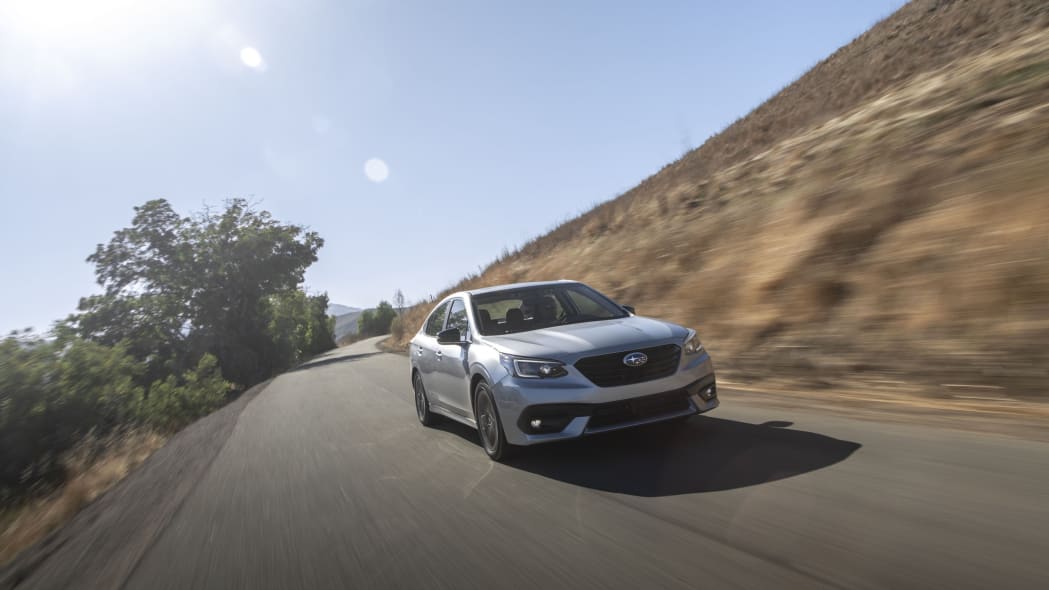
What features are available and what’s the price?
Pricing for the 2020 Subaru Legacy starts at $23,645, including the $900 destination charge. That’s less money than a Honda Accord despite having more equipment and standard all-wheel drive.
Standard equipment on the base Legacy includes automatic LED headlights, 17-inch steel wheels, the EyeSight Driver Assist technology suite (see safety section below), adaptive cruise control, two USB ports, two 7-inch touchscreens, satellite radio, Android Auto, Apple CarPlay and a four-speaker sound system. Stepping up to the Premium for $24,895 seems like a good place to start for most shoppers, however, as it adds alloy wheels, dual-zone climate control, a power driver seat, heated front seats and mirrors, a leather-wrapped steering wheel, two rear USB ports, and the 11.6-inch vertically oriented touchscreen. That’s a lot of worthwhile content for $1,250.
Note that the more powerful, turbocharged engine is only available on the pricey top two trim levels and is denoted with the name XT. For a full breakdown of features, specs and local pricing for each 2020 Legacy trim level, check out this page here on Autoblog.
Base: $23,645
Premium: $25,895
Sport: $27,845
Limited: $30,645
Limited XT: $35,095
Touring XT: $36,795
What are its safety equipment and crash ratings?
Every 2020 Legacy comes standard with Subaru’s EyeSight suite of driver assistance technologies. This includes forward collision warning, automatic emergency braking, lane-departure warning, and adaptive cruise control. Blind-spot warning and rear cross-traffic assist are optional on the Premium and Sport, and standard on the Limited and Touring. Those trims also add standard reverse automatic braking. The Driver Focus camera-based driver inattention warning system is optional on the Limited and standard on the XT trims.
The 2020 Legacy had not been crash tested by a third party at the time of this writing, but considering the near-perfect performance of the outgoing 2019 model, it’s safe to assume the new versions should be the same or better.
Auto Blog
via Autoblog https://ift.tt/1afPJWx
October 28, 2019 at 08:14AM